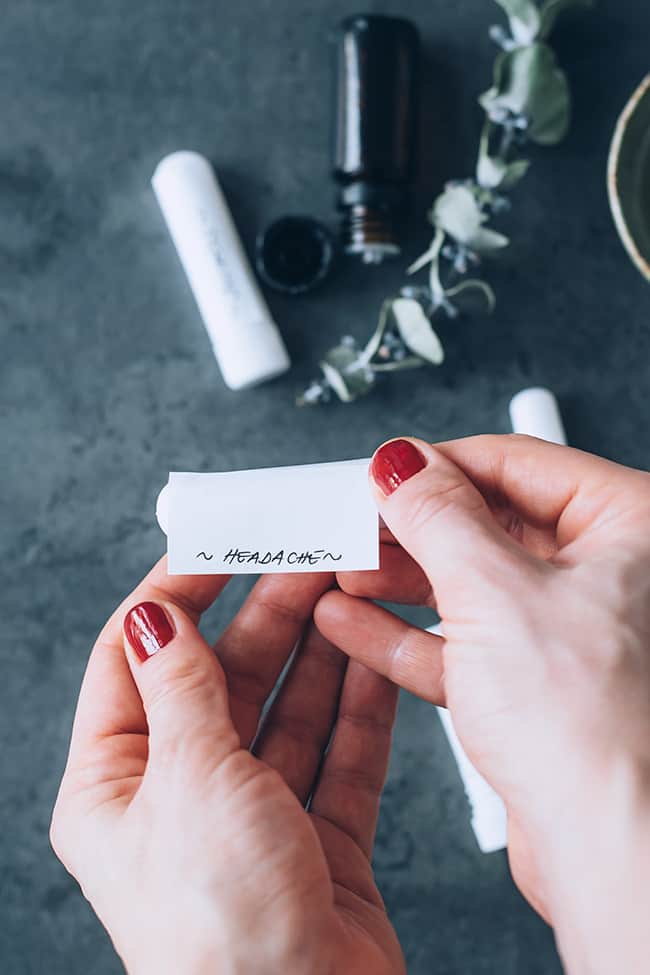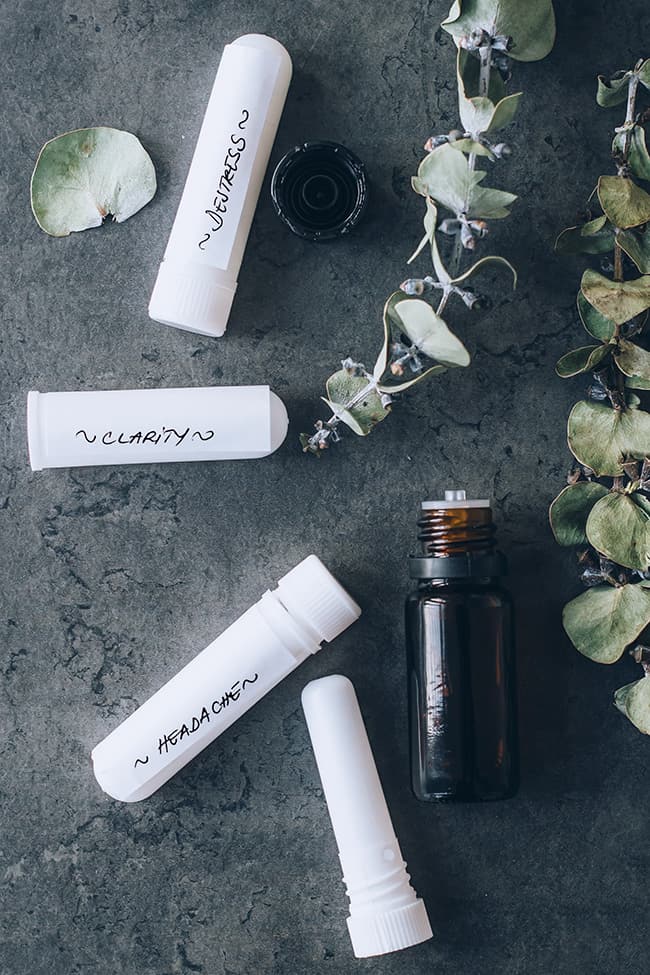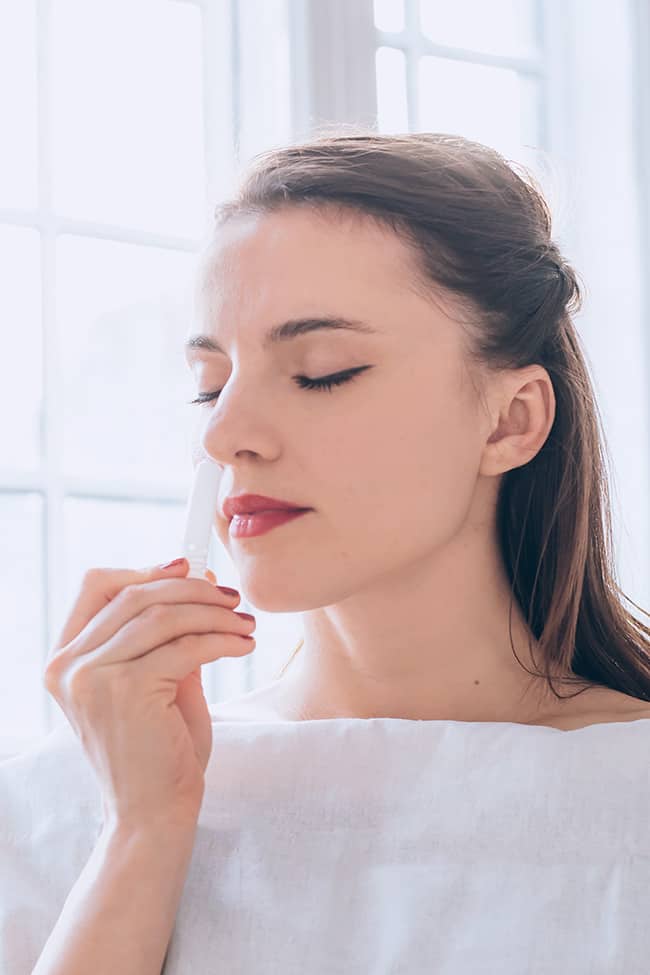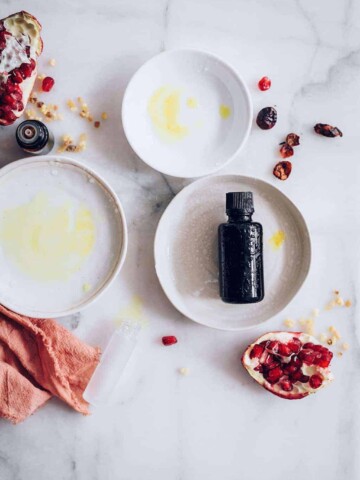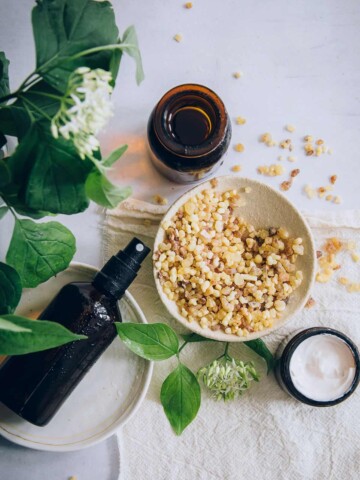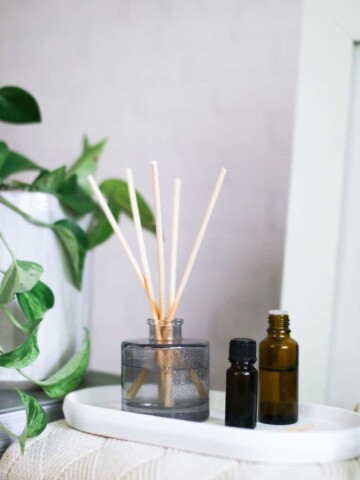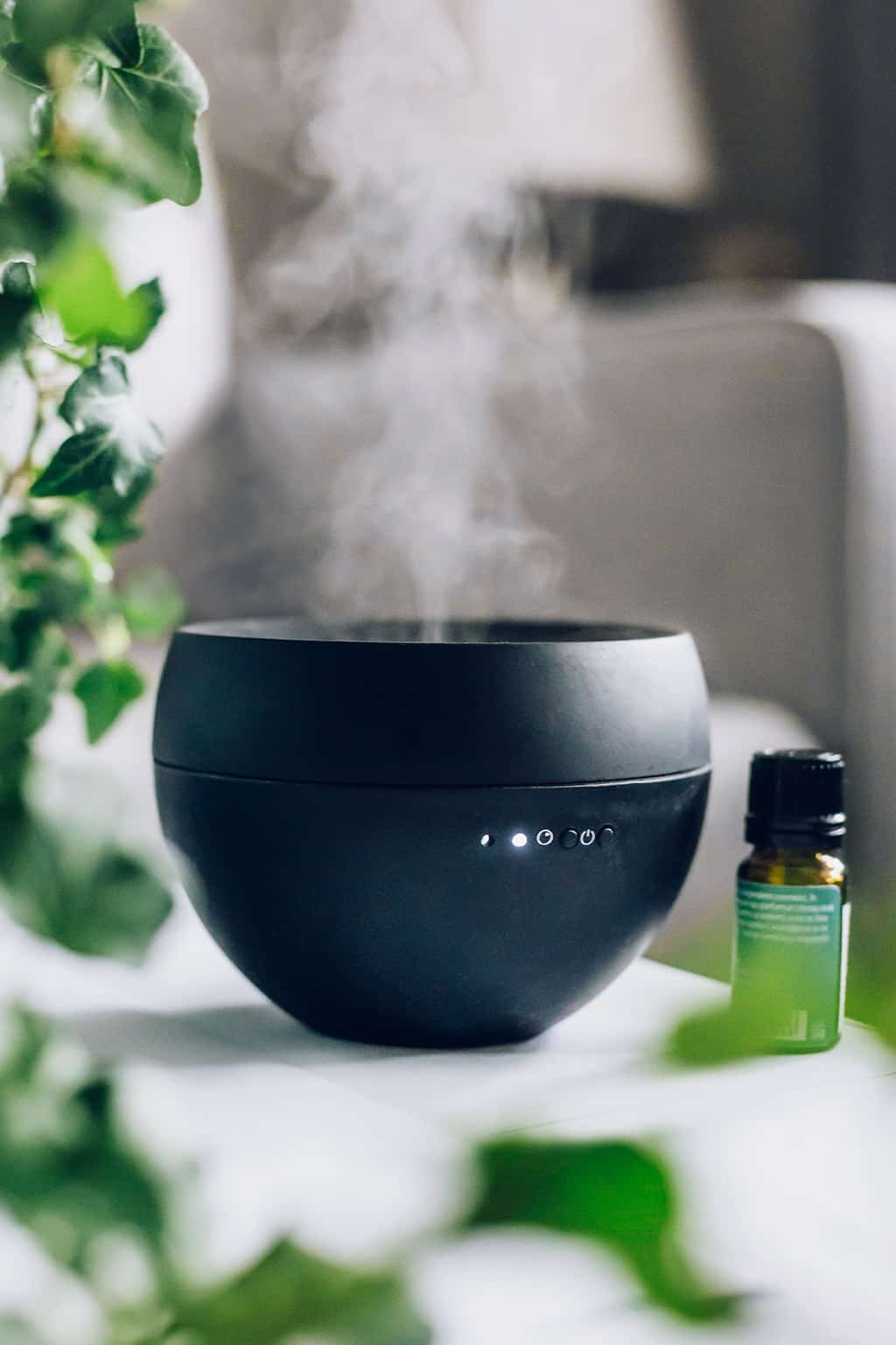Have you ever taken a whiff of an essential oil right out of the bottle? Maybe you’ve taken a quick sniff of eucalyptus for clogged sinuses or even put a drop of lavender in your palm. I know that breathing in the floral aroma of lavender instantly makes me feel more relaxed. Inhaling essential oils allows them to work quickly on different systems of the body, and honestly, it’s the simplest way to use them.
However, it’s important to note that not all essential oils are safe for babies, kids, and even certain adults (pregnant women, older folks) to use, even via inhalation. Always make sure you research the essential oils you’re using to make sure they’re safe for you and those around you.
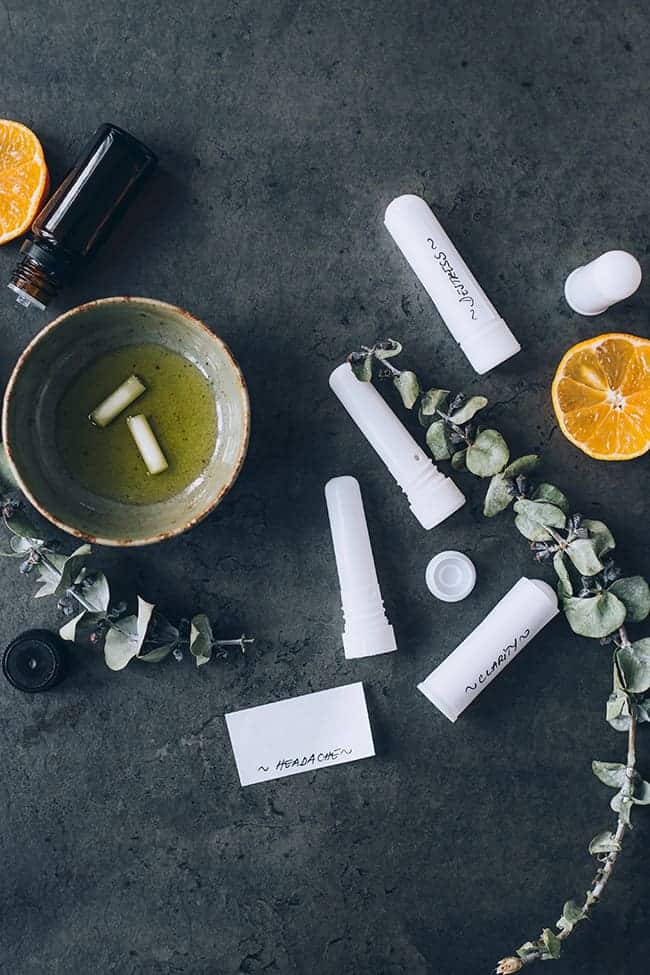
There’s only one tiny problem: taking essential oil bottles on the go is a bit of a hassle, and it’s not always feasible. They’re breakable and can leak, not to mention the fact that not everybody enjoys the smell of essential oils. This is where DIY essential oil inhalers come in—they’re the perfect solution!
Essential oil inhalers are convenient and portable, and they’re an excellent choice for kids (with kid-safe oils, of course). Personally, they’re my favorite way to use essential oils with my kiddos. My boys think the inhalers are fun to use and make them feel pretty special. Plus, it forces them to stop what they’re doing for a couple of minutes and reset while they’re smelling the aroma.
But they’re not just a great option for kids—they’re great for adults to use, too! These inhalers are small enough to fit in your pocket, purse, or backpack, and the scent in them stays strong for weeks. It’s also a great way to utilize the benefits of multiple essential oils at one time without having to carry around several different essential oil bottles, plus a diffuser!
When using a diffuser, the aroma of the essential oils can permeate a large area. Sometimes this just isn’t a viable option, especially if you’re at work or traveling with other people. However, essential oil inhalers are especially useful if you’re in a confined environment and concerned about the aroma bothering those around you. Also, you don’t have to worry about them breaking or leaking, and if you happen to lose one, you’re only out a buck or two!
Previously, we talked about diffusing essential oils, a method that transmits the oils into the air. But directly inhaling essential oils—whether from the bottle, in smelling salts, from the palm, or in DIY inhalers—affects the body in a way that can be beneficial for a variety of ailments [source].
For many individuals, aromatic inhalation can address respiratory issues [source], headaches [source], sleep problems [source], nausea [source], high blood pressure [source], and anxiety [source] or stress [source]. Peppermint and ginger, for example, have a long history of use for nausea, while lavender and rose have traditionally been used to promote feelings of calm and reduce stress.
How to Make an Essential Oil Inhaler
It’s incredibly simple to make your own essential oil inhaler. Here’s how, plus a few recipes to get you started:
First, gather your essential oils and a small dish, then break open your inhaler to separate the four parts:
-outer lid
-inner cylinder
-cotton wick
-plug
Now, add a total of about 15 to 20 essential oil drops to a small dish, place the cotton wick in the dish, and roll it in the essential oils for a couple of minutes or until the oils are fully absorbed. To avoid covering your hands in essential oils, use tweezers or a toothpick to move the wick around.
Next, pick up the cotton wick (preferably with tweezers), stick it into the bottom of the inner cylinder, and grab the plug and press it into the bottom until you hear it click into place.
Finally, replace the outer lid and don’t forget to label it!
When the aroma starts to fade (usually after a couple of weeks), simply take out the cotton wick and refresh the essential oils as needed.
To use the inhaler throughout the day, just remove the outer lid and hold the inhaler under your nose. Breathe in and out slowly and deeply for 1–2 minutes. Try alternate nostril breathing by pressing one side of your nose closed with your finger and breathing in through the other nostril. Exhale through your mouth and switch sides.
Make sure to secure the lid on your inhaler when you’re not using it, and most importantly, make sure to keep it somewhere where you’ll remember to use it!
10 Essential Oil Inhaler Recipes
Stress Less
-3 drops clary sage
-6 drops bergamot
-6 drops lavender
Clarity
-7 drops grapefruit
-5 drops Scots pine
-3 drops juniper berry
Headache
-5 drops rosemary
-2 drops peppermint
-8 drops lemon
Nausea and Motion Sickness
-5 drops ginger
-5 drops cardamom
-5 drops black pepper
Burnout
-7 drops sweet orange
-5 drops rosemary
-3 drops geranium
Easy Breathing
-7 drops cedarwood
-4 drops frankincense
-4 drops juniper berry
-4 drops eucalyptus
Mood Boost
-2 drops peppermint
-5 drops lemon
-5 drops lime
-5 drops orange
Focus
-4 drops peppermint
-5 drops rosemary
-6 drops grapefruit
Stay Grounded
-2 drops ylang ylang
-3 drops vetiver
-5 drops lavender
-5 drops mandarin
Anti-Germ
-2 drops cinnamon
-3 drops eucalyptus
-4 drop lemon
-5 drops orange
Tell me, do you use essential oil inhalers? If so, what are some of your favorite oils to use in them?
This article was medically reviewed by Dr. Gina Jansheski, a licensed, board-certified pediatrician who has been practicing for more than 20 years. Learn more about Hello Glow's medical reviewers here. As always, this is not personal medical advice and we recommend that you talk with your doctor.
230
